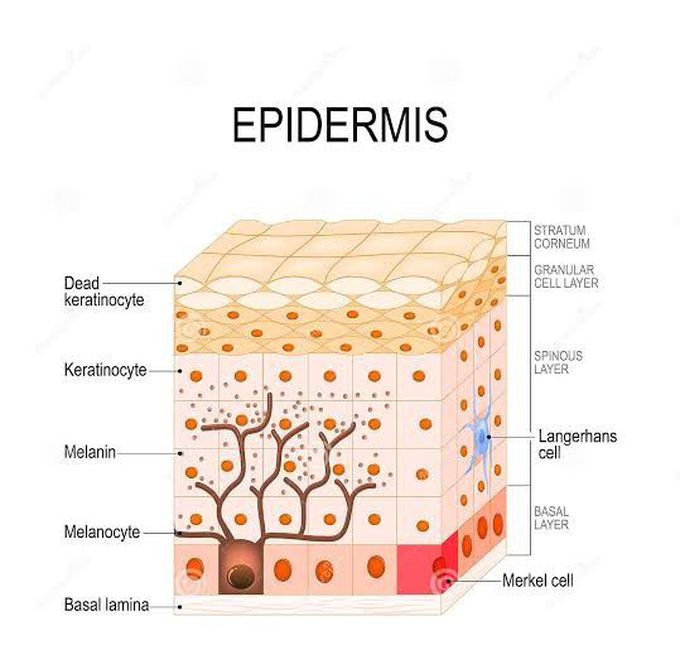


Outer most skin layer - Epidermis
Your skin has three main layers, and the epidermis (ep-uh-derm-us) is the outermost layer in your body. The other two layers of skin are the dermis and hypodermis. The epidermis is the thinnest layer of skin, but it’s responsible for protecting you from the outside world, and it’s composed of five layers of its own. Each layer of your skin works together to keep your body safe, including your skeletal system, organs, muscles and tissues. The epidermis has many additional functions, including: Hydration. The outermost layer of the epidermis (stratum corneum) holds in water and keeps your skin hydrated and healthy. Producing new skin cells. New skin cells develop at the bottom layer of your epidermis (stratum basale) and travel up through the other layers as they get older. They reach the outermost layer of your epidermis after about a month, where the skin cells shed from your body as new cells develop at the bottom layer. Protection. The epidermis acts like armor to protect your body from harm, including ultraviolet (UV) radiation, pathogens (bacteria, viruses, fungi and parasites) and chemicals. Skin color. The epidermis has cells called melanocytes which make melanin, which is a group of pigments in your skin that provides skin color.

